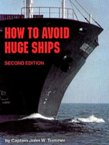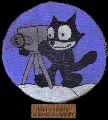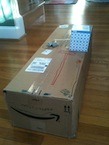Lokasenna
Posts: 9297
Joined: 3/3/2012
From: Iowan in MD/DC
Status: offline

|
quote:
ORIGINAL: richlove
I agree that the more systematic you are, the better results you'll get (and, in the long run, I suspect you'll have less heartache over it). I review my training squadrons on the 1st of every game month (nowhere near the frequency of wneumann). It took me about 6 hours of real life time, probably. I can't imagine doing anything like that, to be honest.
Regarding the process, here's what I *think* I'm doing with respect to wneumann's point 7, above. Pilots destined for fighters go through the 'air' track, etc. Note that this doesn't speak to the #s of groups you have active per country at whatever year of the game. I know I missed some skills - I whipped up this image quickly, but would be happy to update it if people share their approaches.

That's pretty much how I approach things. The way I see it, there are a small number of basic pilot needs.
1) Fighters. Training Air and Strafe, as well as Exp, is necessary here.
2) Recon and Transport - only really need to train these specific skills. Defense skill is just gravy.
3) Tactical LBA bombers: I will train some in Ground Bombing/Low Ground, and some in Ground Bombing/Low Naval.
3a) And for the Allies, Attack Bombers like Strafe skill, right? Those would get LowG/Strafe or LowN/Strafe, but only a few pilots needed here compared to the other groupings...
4) Strategic LBA bombers: Pretty much just Ground Bombing here.
5) Carrier groups/pilots
5a) Torpedo bombers: this one hurts. Since these are typically on your carriers, you'll want all manner of skills trained here. ASW as TBs are generally the best ASW platform, NavT, NavB, and probably even LowNav.
5b) Dive bombers: to take some of the strain off of required skills for TBs, I like to tran DB pilots in Nav Search, as well as NavB. Low Nav is unnecessary and even counterproductive.
6) Float planes - depending on how you use these groups, you probably want a mix of pilots trained in NavSearch/Recon (for BBs/CAs and bombarding), or NavSearch/ASW (for convoy or CV TF protection), or Air/NavSearch for those Rufe/Rex groups.
But richlove's graphic dumbs this down a bit more than I just did. In my experience, the higher Exp a pilot has, the more likely they are to survive a mission, so it's important to get your combat pilots up into the 60s if at all possible - I know it's hard once they hit the magic 50 or 51 Exp where training slows down.
|
 Printable Version
Printable Version
















 . +1
. +1


 New Messages
New Messages No New Messages
No New Messages Hot Topic w/ New Messages
Hot Topic w/ New Messages Hot Topic w/o New Messages
Hot Topic w/o New Messages Locked w/ New Messages
Locked w/ New Messages Locked w/o New Messages
Locked w/o New Messages Post New Thread
Post New Thread